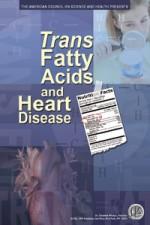
The recent addition of trans fat information to the Nutrition Facts labels on food products, combined with news media reports and activists warnings, have brought these fats to the forefront of public concern.
In a national survey conducted in November 2005, 81 percent of a representative sample of U.S. consumers reported being aware of trans fats, and 54 percent indicated that they were trying to decrease their trans fat consumption (IFIC Foundation, 2006).
Putting the role of trans fatty acids (TFAs) into perspective can be difficult, both because of the intensity of the rhetoric surrounding them and because of widely varying claims about the extent of the health risk they pose.
Should American consumers believe the Food and Drug Administration s claim that between 600 and 1,200 heart attacks per year will be averted by trans fat labeling on food products? Or should they believe the predictions by some scientists that removal of TFAs from the food supply could prevent more than 200,000 heart attacks per year?
Is some number between these two extremes more realistic? Or are the data insufficient to justify confidence in any numerical estimates at all?
Trans Fatty Acids and Heart Disease by American Council on Science and Health on Scribd


